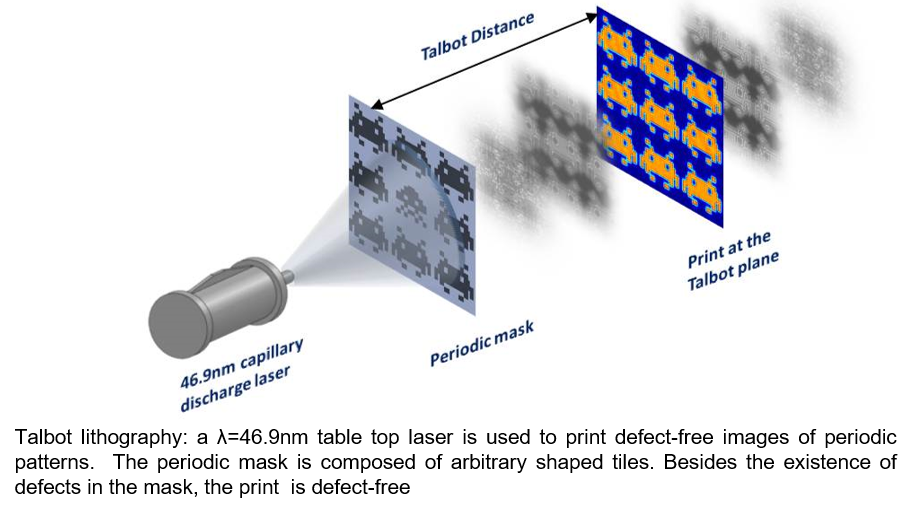A practical, high throughput, table-top lithographic system with unique characteristics:
* Defect tolerant. Since the ratio of the defect’s area to the mask area is in general small, the print is defect-free.
* Compact. A table top system that has the potential to bring nano-patterning capabilities to small size companies or university research laboratories.
* Non-contact. The mask is not damaged nor degraded with the usage.
* Simple to implement. The working distance between mask and wafer is very large, typically millimeters, which facilitates the experimental set up.

Benefits of the technology:
- Produces defect-free prints from severely defective masters.
- Especially suited for the fabrication of periodic structures at the nano-scale in simple and cost effective way.
- Well suited for fabrication of patterns that are replicated over large surfaces
- Possible applications: flash memory devices, in plasmonics surfaces, detectors based on surface stimulated Raman scattering, nano-reticles, etc..
Selected Publications
- “Defect free periodic structures using extreme ultraviolet Talbot lithography in a table top system”. Li, V. Martinez Esquiroz, L. Urbanski, D. Patel, C.S. Menoni, M. C. Marconi, A. Stein, W. Chao, E.H. Anderson. Journal of Vacuum Science and Technology B 31, 06F604-1 (2013). Also this article was a selected as a key scientific article contributing to excellence in engineering scientific and industrial research by Advances in Engineering Ltd (http://advanceseng.com)
- “Optical properties of two-dimensional fractional Talbot patterns under coherent EUV illumination”, Kim, Hyun-su; Li, Wei; Danylyuk, Serhiy; Brocklesby, William; Marconi, Mario; Juschkin, Larissa. Journal of Physics D: Applied Physics, 48, 1, (2015). Doi:10.1088/022-3727/48/37/375101.
- “Progress in Coherent Lithography Using Table Top Extreme Ultraviolet Lasers”. W. Li, L. Urbanski, M.C. Marconi. Invited Review. Review of Scientific Instruments, 86, 121301, (2015). Selected for the cover of the December issue of the journal.
Funding
National Science Foundation